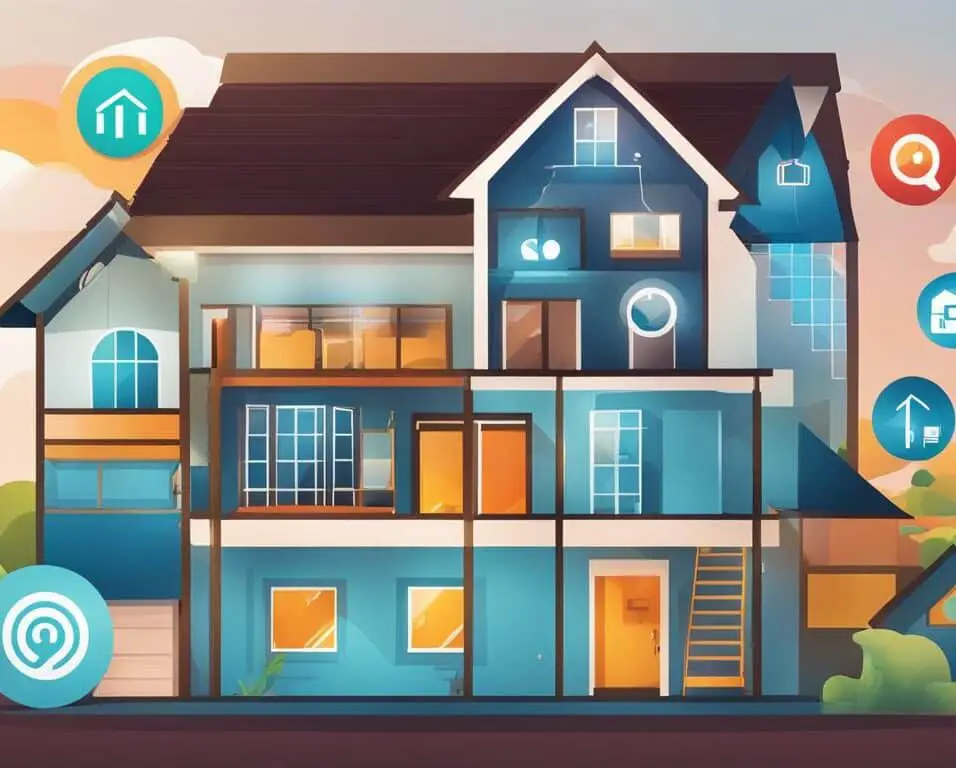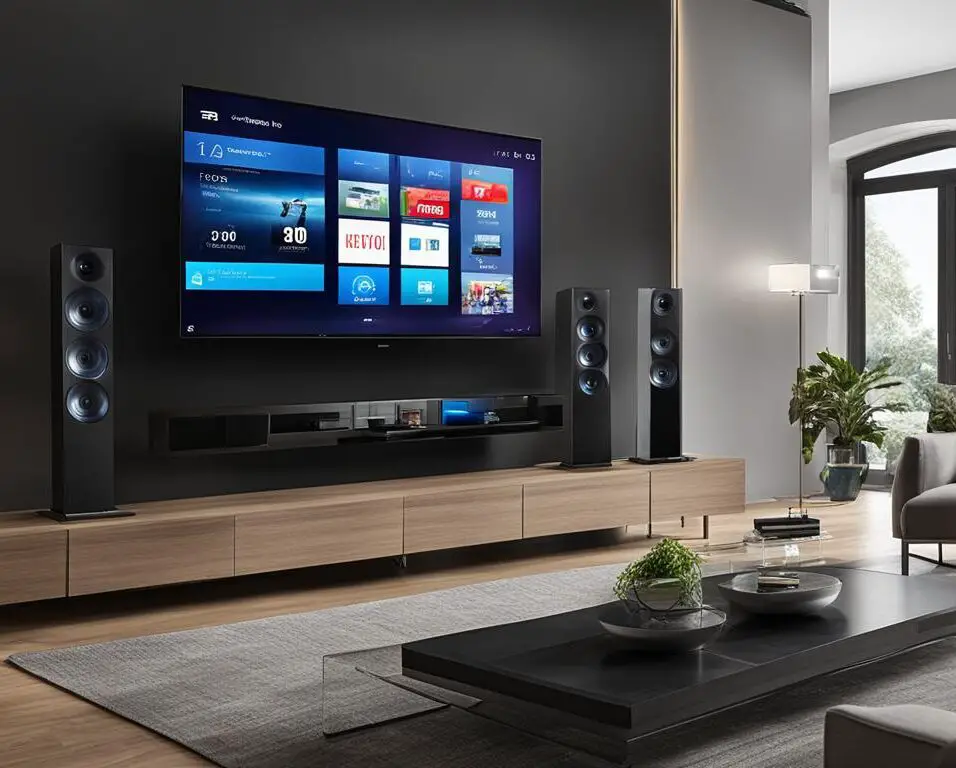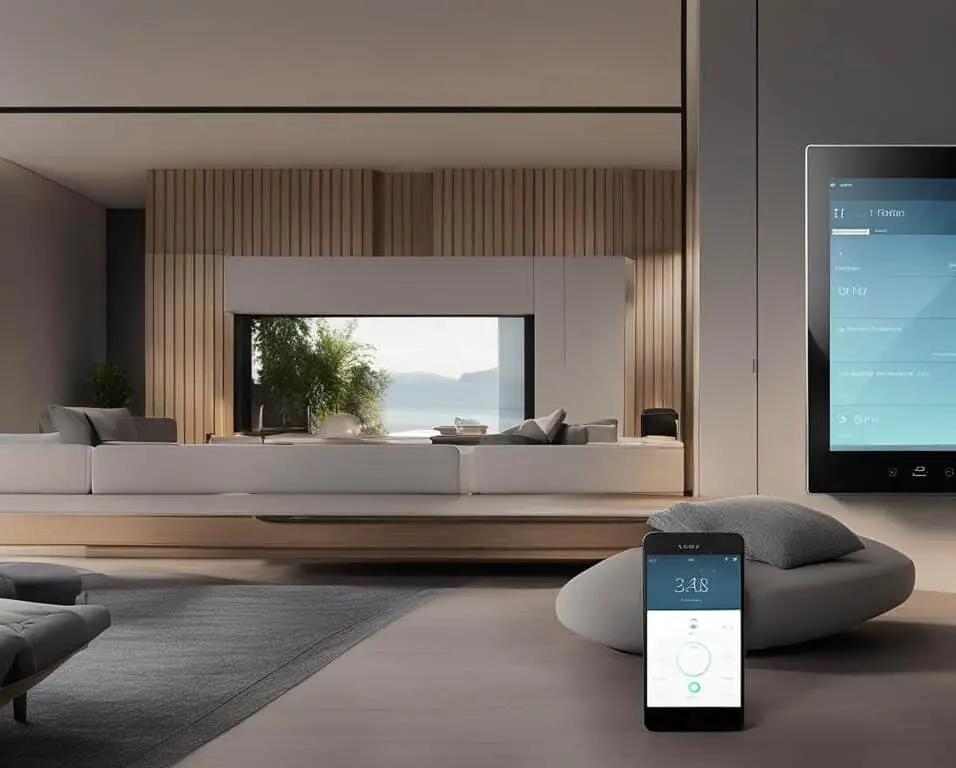Navigating Privacy and Security in Smart Homes
The rise of smart home technology has brought about concerns regarding privacy and security. With the increasing connectivity of smart devices, there is a legitimate worry about unauthorized access and data breaches. Data security is a paramount concern, as the abundance of data collected by these devices can be exploited by cybercriminals. Additionally, improper data use and sharing by smart home device manufacturers raise questions about user control over personal data. It is essential for smart home device owners to take steps to safeguard their privacy by implementing security measures and staying informed about privacy policies.
Key Takeaways:
- Privacy concerns have arisen with the rise of smart home technology.
- Data security is a major concern as smart devices collect and transmit vast amounts of data.
- User control over personal data is a crucial aspect that needs to be addressed.
- Implementing security measures and staying informed about privacy policies are essential for safeguarding privacy.
- Legislation and regulations also play a role in protecting user privacy in smart homes.
Privacy Concerns in a Connected Home

As smart home devices become more integrated into our daily lives, it is essential to address the privacy concerns that arise from their connectivity. Protecting privacy in a connected home environment is crucial to maintain security and ensure that personal data remains confidential. Users are increasingly worried about unauthorized access to their smart home systems, which could compromise their homes and personal information.
One of the main privacy concerns in a smart home is data security. Smart devices collect and transmit vast amounts of data, ranging from personal information to usage patterns. Users fear that this data could be accessed by malicious actors, potentially leading to identity theft or home intrusion. Additionally, some smart home device manufacturers collect and share user data with third parties, raising questions about transparency and user control over their data.
“Protecting the privacy of smart home users should be a top priority. By implementing robust security measures and ensuring transparent data practices, we can build a safer and more trustworthy smart home ecosystem.”
To maintain privacy in smart home devices, it is important for users to take several steps. First and foremost, securing the home Wi-Fi network with strong passwords and encryption protocols is crucial to prevent unauthorized access. Enabling two-factor authentication for smart home accounts adds an extra layer of security. Reviewing and customizing the privacy settings of smart devices, as well as keeping the devices’ software up to date, helps protect against vulnerabilities.
“Maintaining privacy in smart homes requires a proactive approach. By understanding the privacy risks and implementing appropriate measures, users can enjoy the benefits of connected living without compromising their personal data.”
In conclusion, privacy concerns in a connected home environment are valid and must be addressed. Protecting privacy in smart home devices requires a combination of user awareness, strong security practices, and transparent data policies from manufacturers. By prioritizing privacy and taking necessary precautions, users can ensure a safer and more secure smart home experience.
Privacy Measures for Smart Homes
When it comes to smart homes, privacy issues in IoT devices are a significant concern. With the increasing connectivity and reliance on these devices, it is crucial to take proactive steps to improve privacy in smart homes. By implementing certain measures and best practices, homeowners can enhance the security and protect their personal data.
The first and foremost step to safeguard privacy in smart homes is to secure the home Wi-Fi network. This can be done by setting strong passwords and enabling encryption protocols. A secure network prevents unauthorized access and ensures that data transmitted between devices remains confidential.

Another effective measure is to review and customize the privacy settings of smart devices. Many devices come with default settings that may not prioritize privacy. By taking the time to configure these settings according to personal preferences, homeowners can have better control over the data collected and shared by their devices.
Regularly updating the firmware and software of smart home devices is crucial for maintaining privacy. Manufacturers often release updates that address security vulnerabilities and improve overall device performance. Keeping devices up to date ensures that any known issues are patched, reducing the risk of unauthorized access or data breaches.
Conclusion
As smart home technology continues to evolve, it becomes increasingly important to prioritize privacy and security. The convenience and connectivity of smart devices bring with them potential privacy risks that must be addressed. By understanding these risks and taking necessary measures, we can protect our personal data and ensure a safer smart home experience.
Securing smart home technology starts with securing our home networks. By using strong passwords and encryption protocols, we can prevent unauthorized access to our smart devices and the data they collect. It is also essential to regularly update the firmware of our devices and enable two-factor authentication for added security.
Protecting privacy in connected homes goes beyond network security. It involves reviewing and customizing the privacy settings of our smart devices, ensuring that we have control over what data is being collected and shared. We should also be proactive in reviewing manufacturer data collection policies and opting for devices with local storage options. Additionally, segmenting our network to separate smart devices from personal devices can provide an extra layer of protection.
In today’s digital landscape, legislation and regulations also play a crucial role in protecting user privacy. The General Data Protection Regulation (GDPR) is one such regulation that sets guidelines for data protection and user rights. By staying informed about these regulations and advocating for stronger privacy measures, we can contribute to a safer and more privacy-centric smart home ecosystem.
In conclusion, securing smart home technology and protecting privacy in connected homes is a continuous effort. By implementing the necessary security measures, staying informed about privacy policies, and advocating for user privacy rights, we can mitigate the privacy risks associated with smart homes. With proper attention to privacy and security, we can enjoy the benefits of connected living while safeguarding our personal data.
FAQ
What are the main privacy concerns in smart homes?
The main privacy concerns in smart homes include data security, unauthorized access, and improper data use by device manufacturers.
How can I mitigate privacy risks in my smart home?
To mitigate privacy risks, you can secure your home Wi-Fi network, enable two-factor authentication, review and customize privacy settings, update device software, and create separate networks for smart devices and personal devices.
How can I protect my personal data in a smart home?
You can protect your personal data in a smart home by securing your network, keeping firmware up to date, managing account passwords, and opting for devices with local storage options. It is also important to review and understand manufacturer data collection policies.
What is the importance of privacy in smart homes?
Privacy in smart homes is essential to safeguard against privacy risks and ensure the protection of personal data. It allows users to enjoy the benefits of connected living while maintaining control over their privacy and security.








